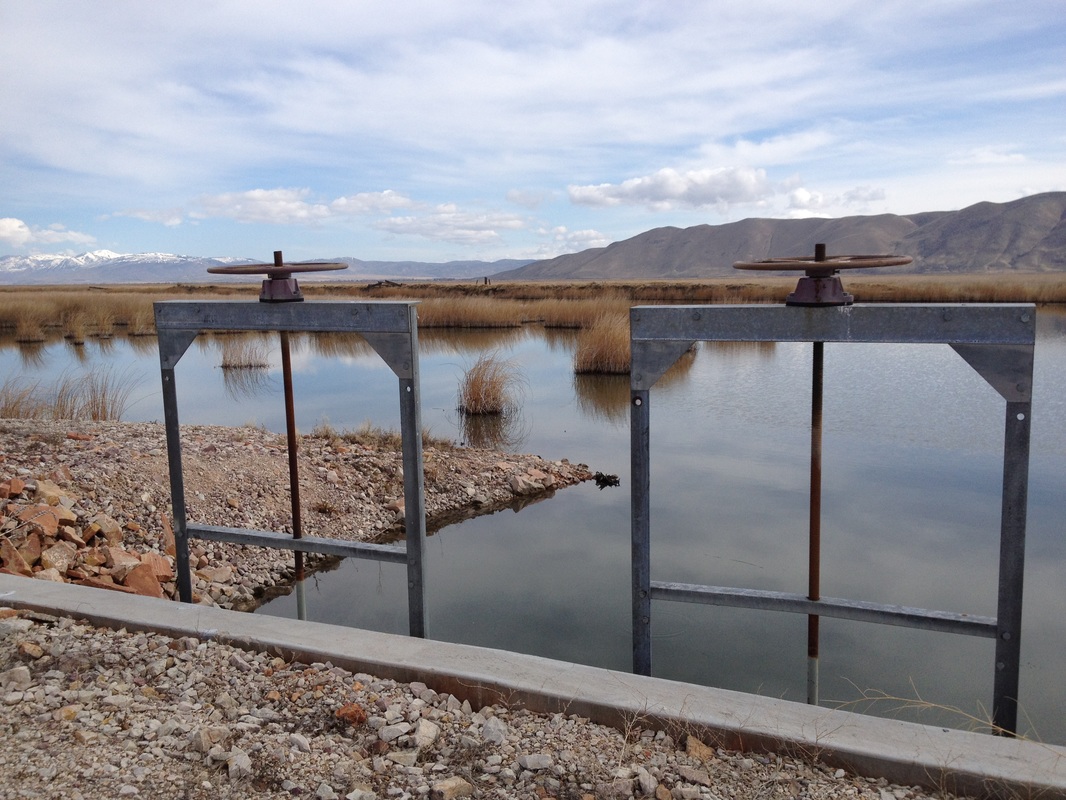|
Overview
In the Intermountain West, we live in a constant state of drought because of our naturally arid environment. On top of that, water availability for wetlands can vary dramatically year to year due to vastly different snowpacks that affect stream runnoff - the freshwater sources to many wetlands on the Great Salt Lake. Understanding the effects of these naturally highly variable water levels on wetland plant communities is critical, particularly for managers trying to maintain wetlands in increasingly over-human-allocated hydrologic systems and in the face of climate change. |
Intensive water management in Great Salt Lake wetlandsOne way that managers have dealt with unpredictable water supplies is by diking wetlands. Diking allows managers to control water levels in wetlands, particularly to create optimal habitat for migratory birds. One question, though, is what is the effect of this intensive water management on wetland health? Ph.D. student Rebekah Downard is evaluating this question by comparing wetland hydrology, soils, and plant communities in 25 diked and 25 "natural" wetlands on the Great Salt Lake. In collaboration with Dr. Joanna Endter-Wada, she will be interviewing wetland managers in the region to understand their motivations for water management and how they carry out their hydrologic manipulations.
|
Paradoxes in adapting to droughtAnother research project in collaboration with Ph.D. student Lisa Welsh, Dr. Joanna Endter-Wada, and Ph.D. student Rebekah Downard evaluates how wetland managers at the Bear River Migratory Bird Refuge have adapted to an unpredictable water supply. We initially presented our research findings at the Ecological Society of America's Water-Ecosystem Services, Drought, and Environmental Justice Millenium Conference in Athens, GA, in 2009 and now have a paper under review on the topic at Ecology and Society. You can watch the two-part video that we presented at this conference here and here.
|
Wetlands without water?
Each year managers at the Bear River Migratory Bird Refuge are faced with small or large water shortages. They have to decide which wetland units they can flood with incoming Bear River water (or other sources to which they have water rights) and which wetlands must remain dry due to water shortfalls. In a recent project withDr. David Rosenberg, Karin wanted to address the question, what are the effects of short and long-term drought on wetland seed banks? She collected seed bank samples from 10 units at the Refuge with differing flooding histories. Analysis of this dataset is currently underway…stay tuned!
To further address the question of how much water wetlands need, Ph.D. student Rebekah Downard in collaboration with Ph.D. student Omar Alminagorta, Karin, Dr. David Rosenberg, and Dr. Joanna Endter-Wada conducted a literature review and meta-analysis of experiments that looked at the effects of drought on wetland plant communities. This manuscript is currently in revision…so findings are forthcoming. |



